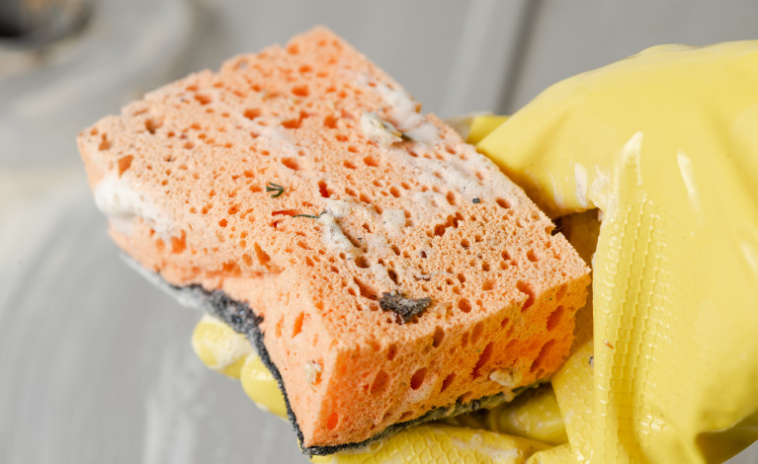The sponge is a classic tool for tackling dirt on all surfaces. However, due to its humidity and use, it quickly turns into a breeding ground for bacteria, including stubborn bad odors! Unless you opt for tawashi which can be machine washed as needed, you will naturally have to throw away and replace your sponge very regularly. Indeed, it is out of the question to clean, degrease or try to sanitize with dirt… And even if it does not cost much, it represents a budget over the months. So, here are some grandmother’s tips for cleaning, deodorizing and disinfecting a sponge for a very effective refresh. To do this, no need for bleach!
Why is it important to clean and disinfect your dish sponge?
Sponges can become a breeding ground for bacteria and germs because they trap moisture, dirt, and food residue. By cleaning and disinfecting your sponge regularly, you reduce the risk of spreading germs on your kitchen utensils and surfaces. An unclean sponge used to wash dishes can also transfer microbes from one surface to another, thus causing a cross contamination. However, all this can lead to food infections (or food poisoning), especially in people who have fragile health.
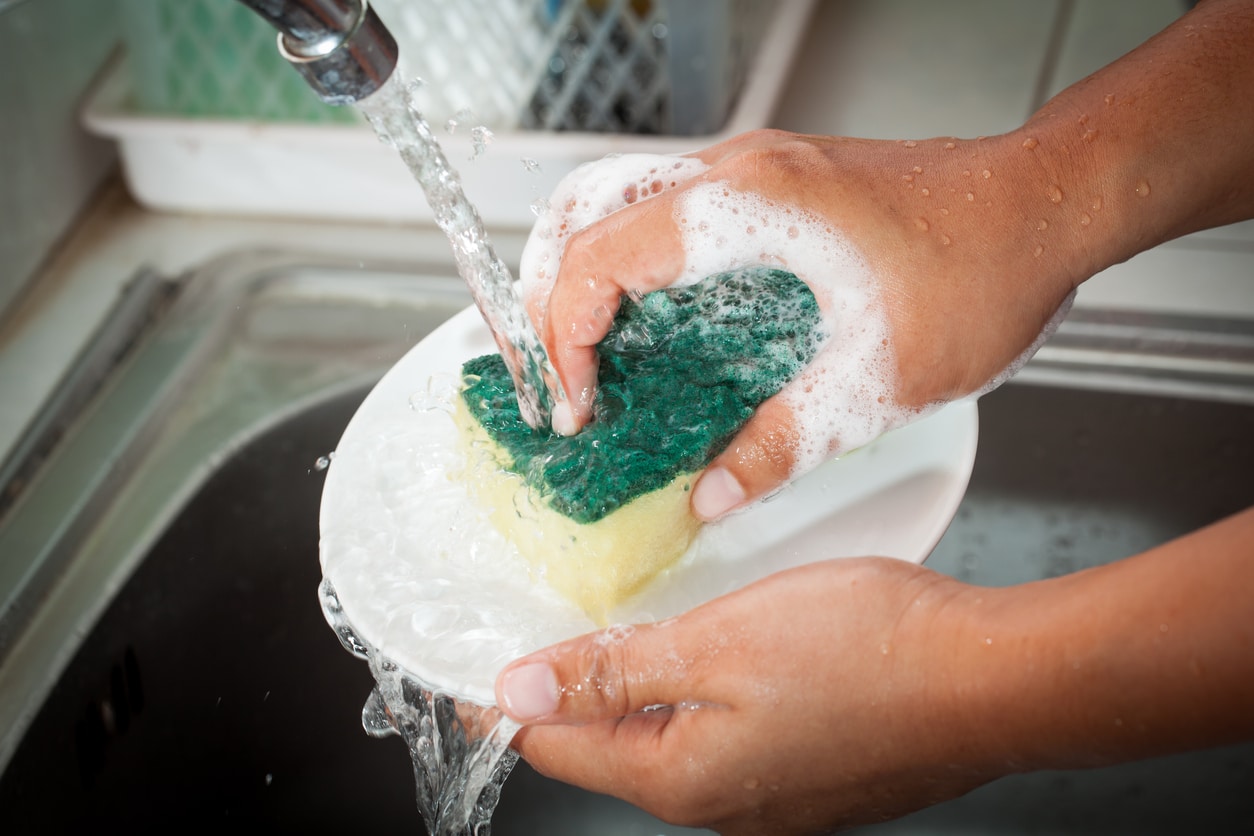
By cleaning your dishwashing sponge regularly, you also extend its lifespan. Dirty and poorly maintained sponges have indeed tends to deteriorate more quickly and quickly smell badwhich means you will have to replace them more frequently. And even if the cost of a sponge is not excessive, it still represents a significant sum in the medium and long term.
Finally, a clean, disinfected sponge is more effective at removing food residue and dirt. That guarantees correctly cleaned dishes and impeccably hygienic surfaces.
1) Using the microwave to clean a sponge
You can totally wipe it with a sponge two minutes at 750W in the microwave. It is in fact a proven way to sterilize a classic synthetic sponge and remove viruses, germs and parasites accumulated during cleaning. However, it should be avoided with natural sponges or a metal sponge (risk of sparks). To do this, first make sure to moisten it well to avoid the risk of fire. The best thing is to slide it into a bowl three-quarters filled with an equal mixture of water and white vinegar. Then let it cool before use (rinsing with cold water can help here). It will indeed be hot after being put in the microwave.
2) You can also clean a sponge in the dishwasher or washing machine
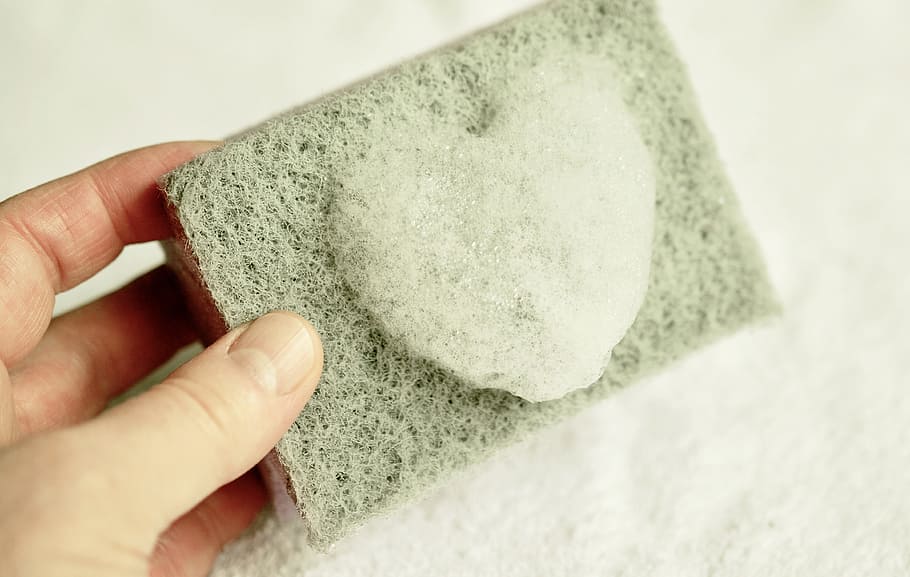
True, in another era, grandmothers did not have these devices. However, today it is difficult for us to do without it. For example, you can clean other things than dishes in the dishwasher, and sponges are no exception. If you do a hot wash for your dishes (above 50°C), take the opportunity to slip your sponges into the cutlery basket with the rest. This will effectively remove all bacteria. Ideally, they should be offered a cleaning once or twice a week in this household appliance to keep the sponge clean. And if you don’t have this appliance in your kitchen, use the washing machine. To clean and disinfect a sponge, slide it in the drum with the laundry and run a cycle at 60°C.
3) Use sodium bicarbonate
This method is aimed at the most patient! Soak your sponges for 4 hours in 1 liter of hot water with a tablespoon of baking soda. Then, rinse the sponge well with clean water before wringing it out. This powder combines a cleaning and disinfectant effect with a powerful deodorizing power.
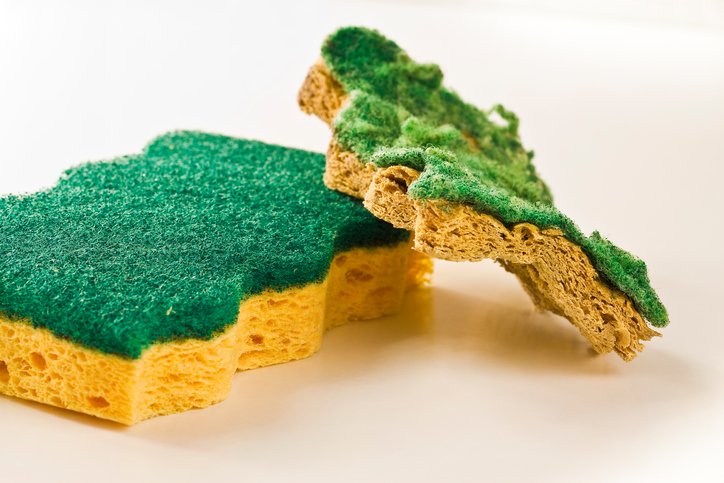
4) Vinegar or lemon juice to clean a sponge
To give it a clean look, opt for a cleaning product such as lemon juice or vinegar. Lemon juice is antibacterial and you can therefore leave your sponges to soak in the juice of one or two citrus fruits overnight for greater cleanliness and freshness. Otherwise, you can also soak them in a water-vinegar mixture for a whole day, always to remove bacteria accumulated over washes.
5) An essential oil to the rescue
You don’t have a microwave, dishwasher or washing machine, but you have essential oils? So, put them to work cleaning the house! For your sponges, you will need to bring water to a boil. Then, add a few drops of cineole thyme essential oil. This is in fact antibacterial and antiseptic. After letting your sponge soak for a while, you can rinse it thoroughly. After this rinse, your dishwashing sponge will be given a new lease of life.
How to keep a sponge clean on a daily basis in addition to cleaning?
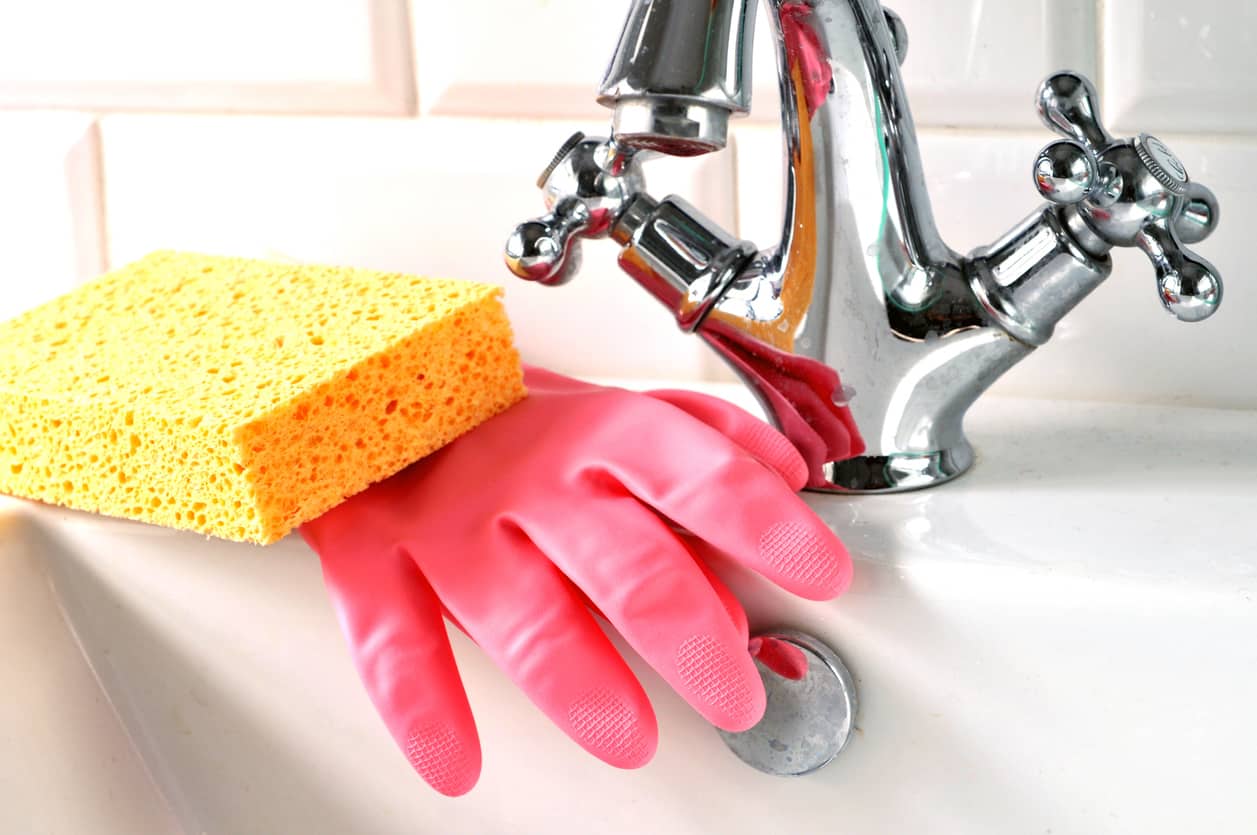
To keep your dishwashing sponge clean on a daily basis and limit the frequency of cleaning, there are good reflexes and habits to adopt. First of all, after using your sponge, make sure to rinse it well and wring it out to remove excess water. Also be sure to carefully remove any food residue to prevent it from getting trapped in the sponge and becoming a source of contamination. After a good spin, place it in a well-ventilated area so that it can dry completely. Humidity actually promotes the growth of bacteria. Proper drying is therefore essential to keep your sponge clean.
Furthermore, leaving your sponge in the sink after use can prolong its humidity and encourage the proliferation of bacteria. For this reason, try placing it in a sponge holder or on a dish rack where it can dry in the open air. It may also be useful tohave several dish sponges that you can alternate between. This allows you to let one sponge dry completely while you use another, reducing the frequency with which each sponge is used and requires cleaning.
But above all, reserve certain sponges for specific taskssuch as cleaning countertops or surfaces, and others for dishes only. This can help to reduce cross contamination. Finally, in addition to daily precautions, it is important to clean and disinfect your sponges regularly as explained earlier, even if you follow good practices.


